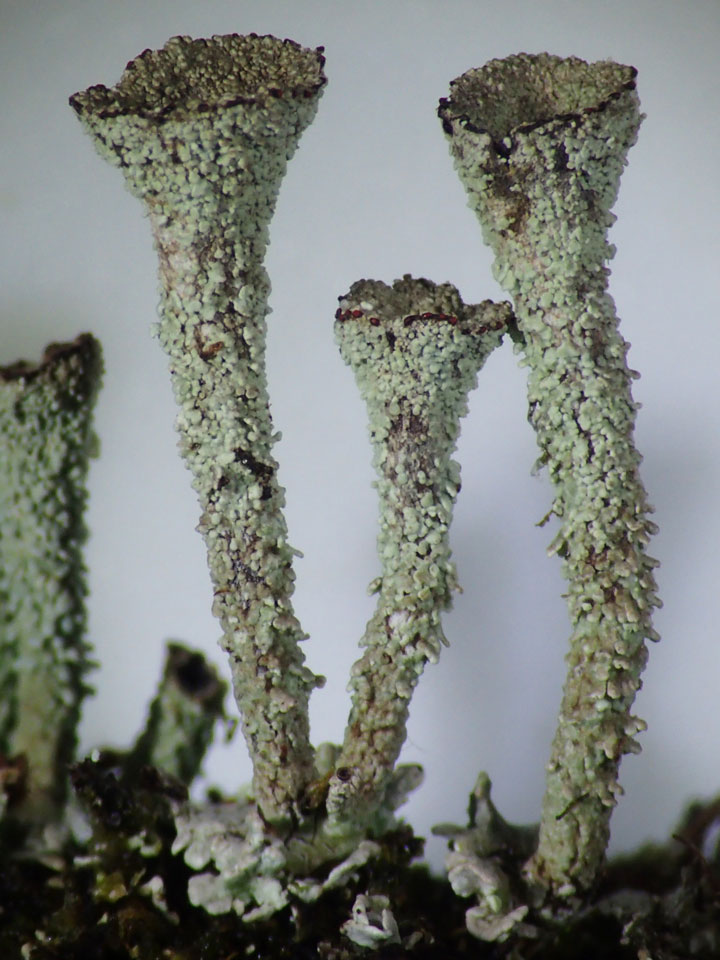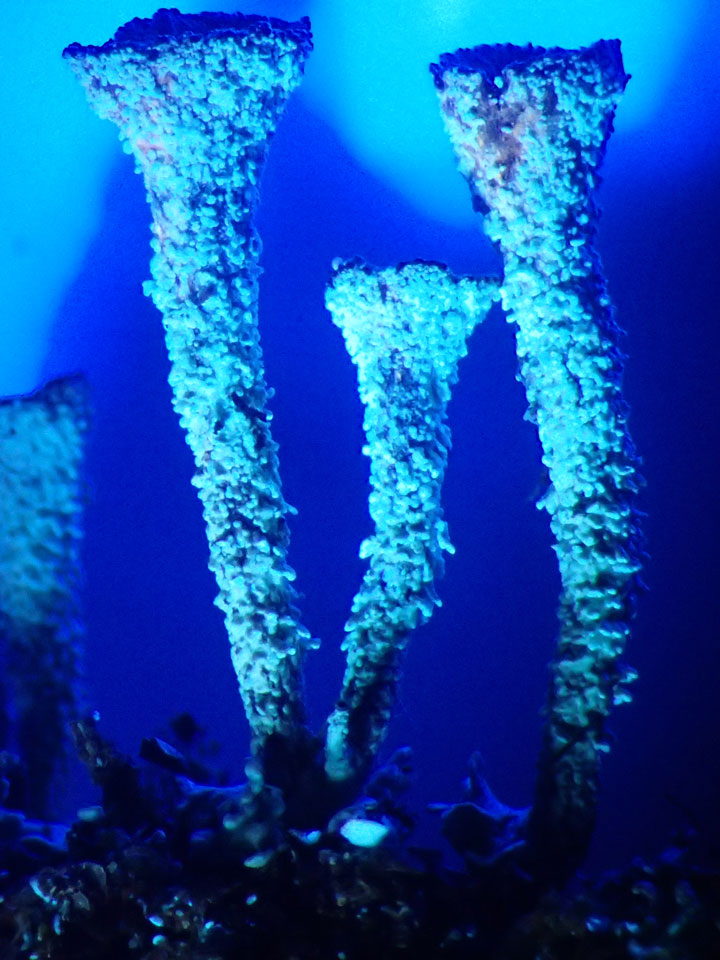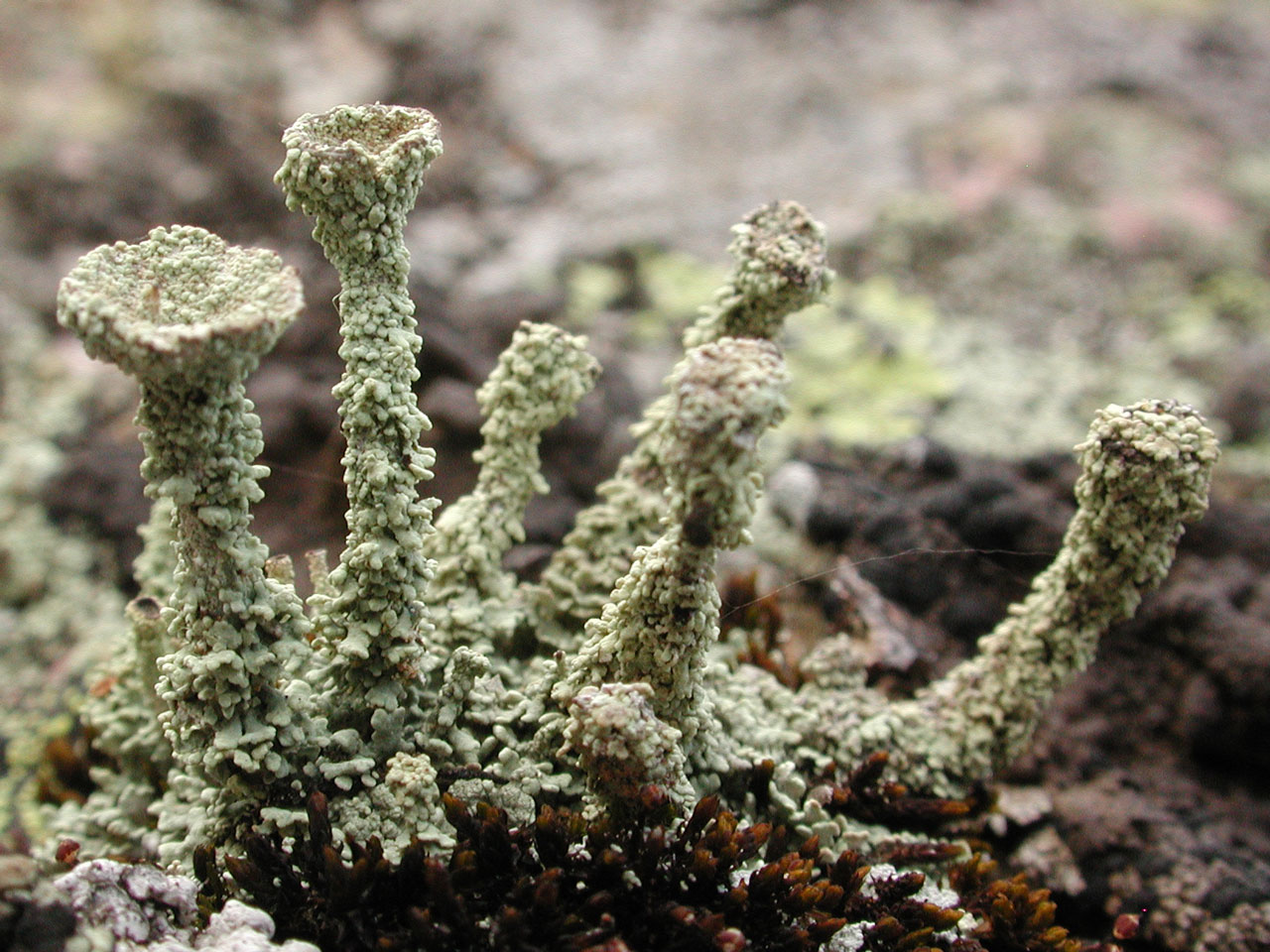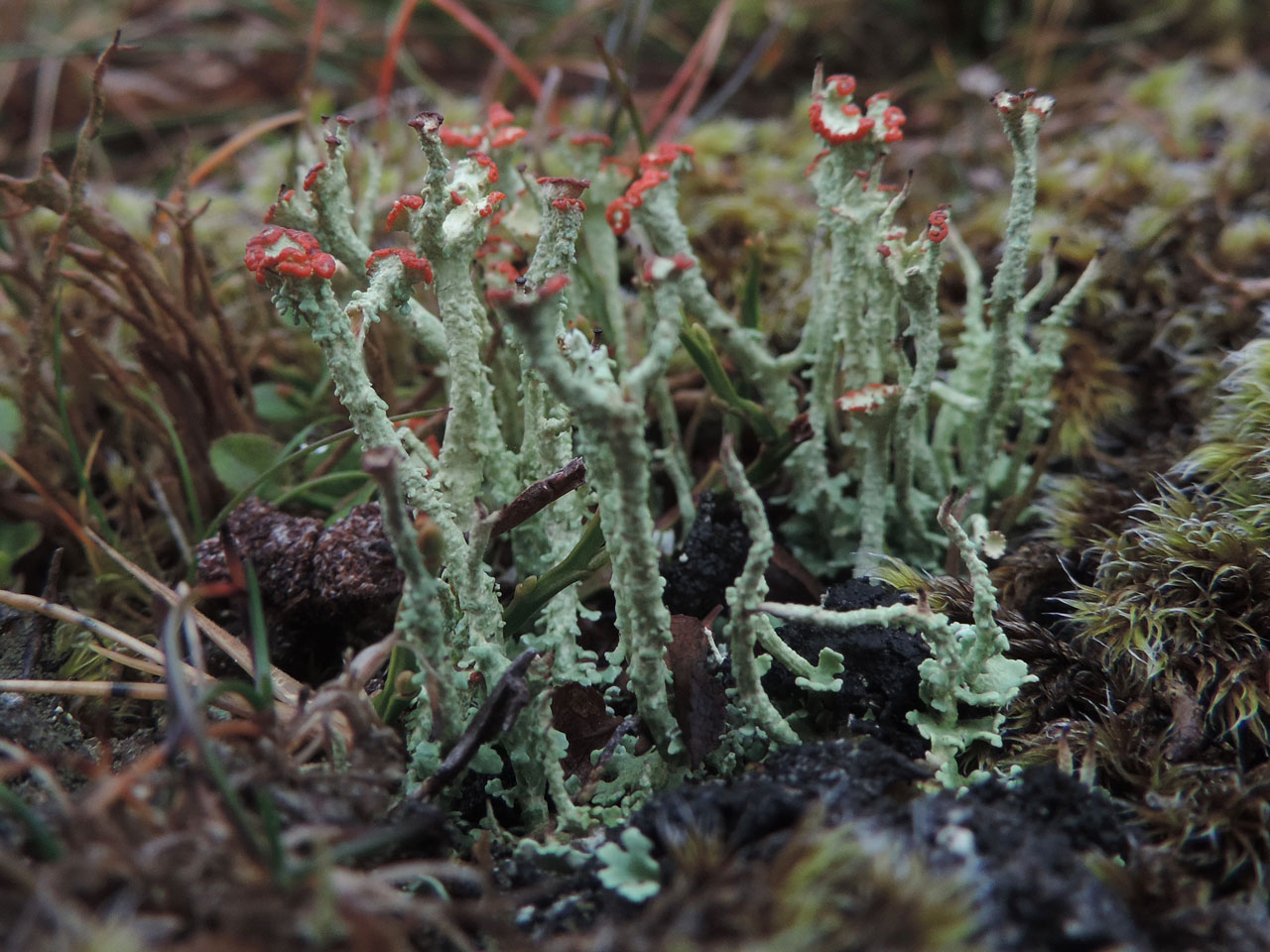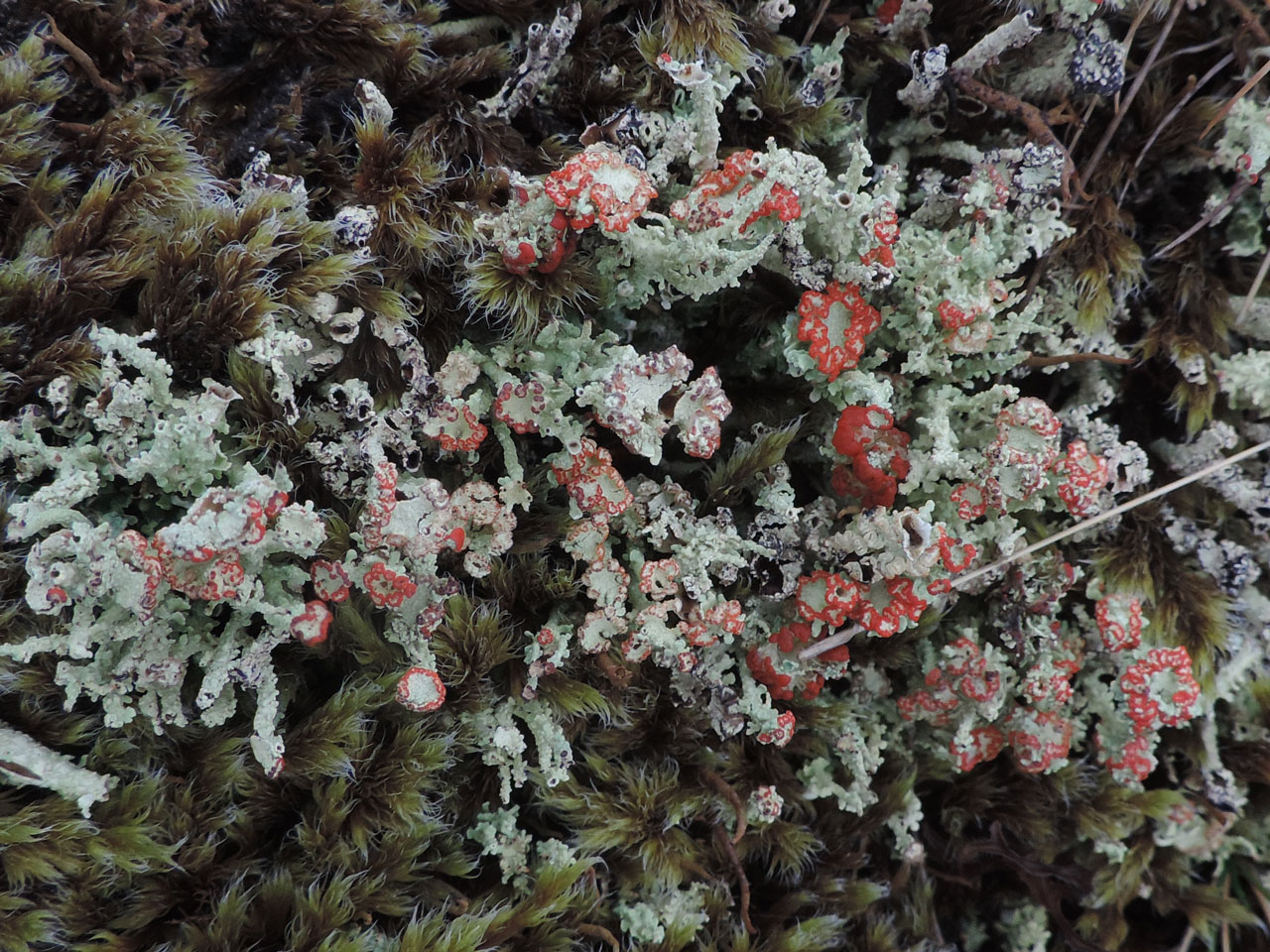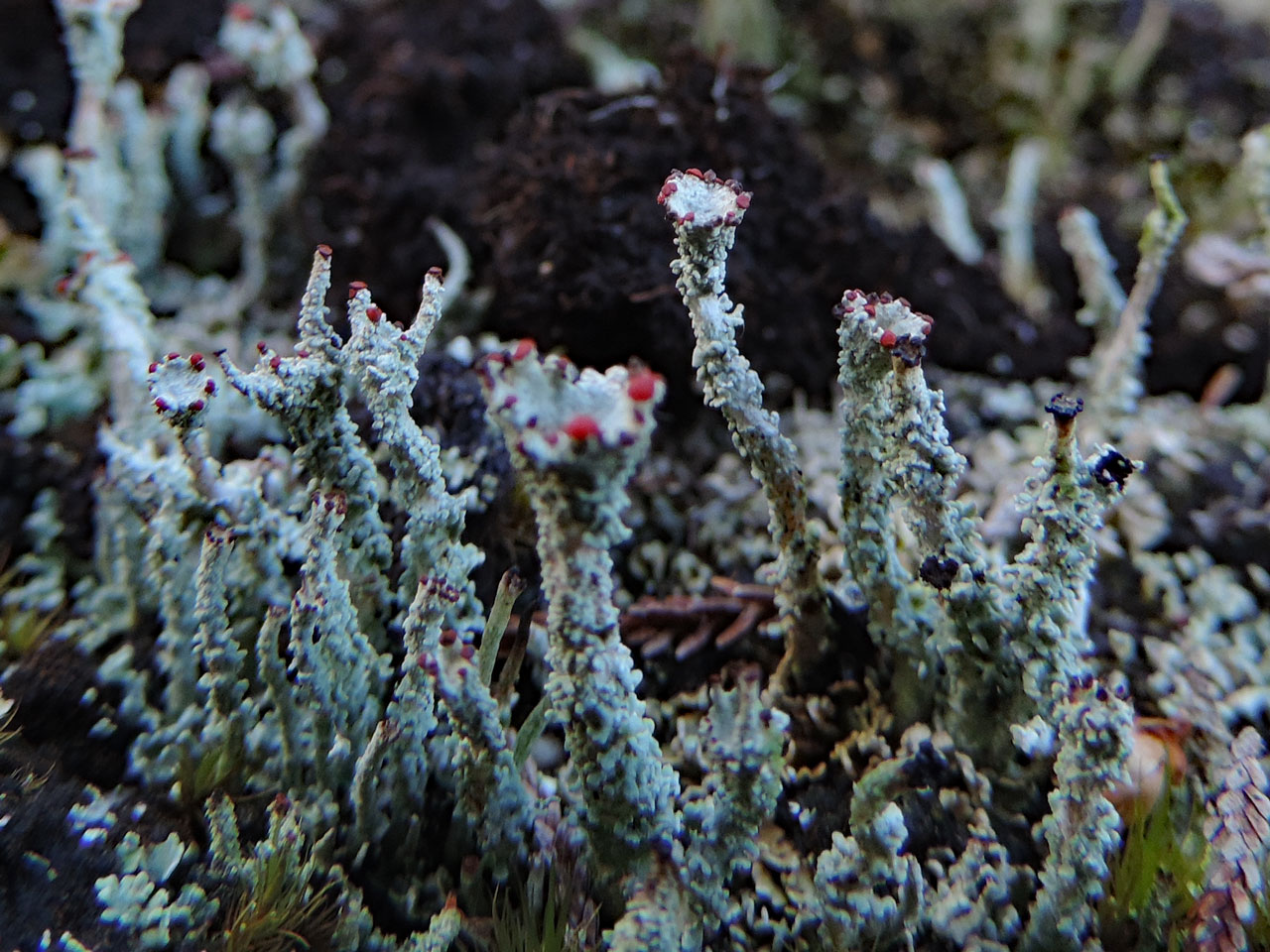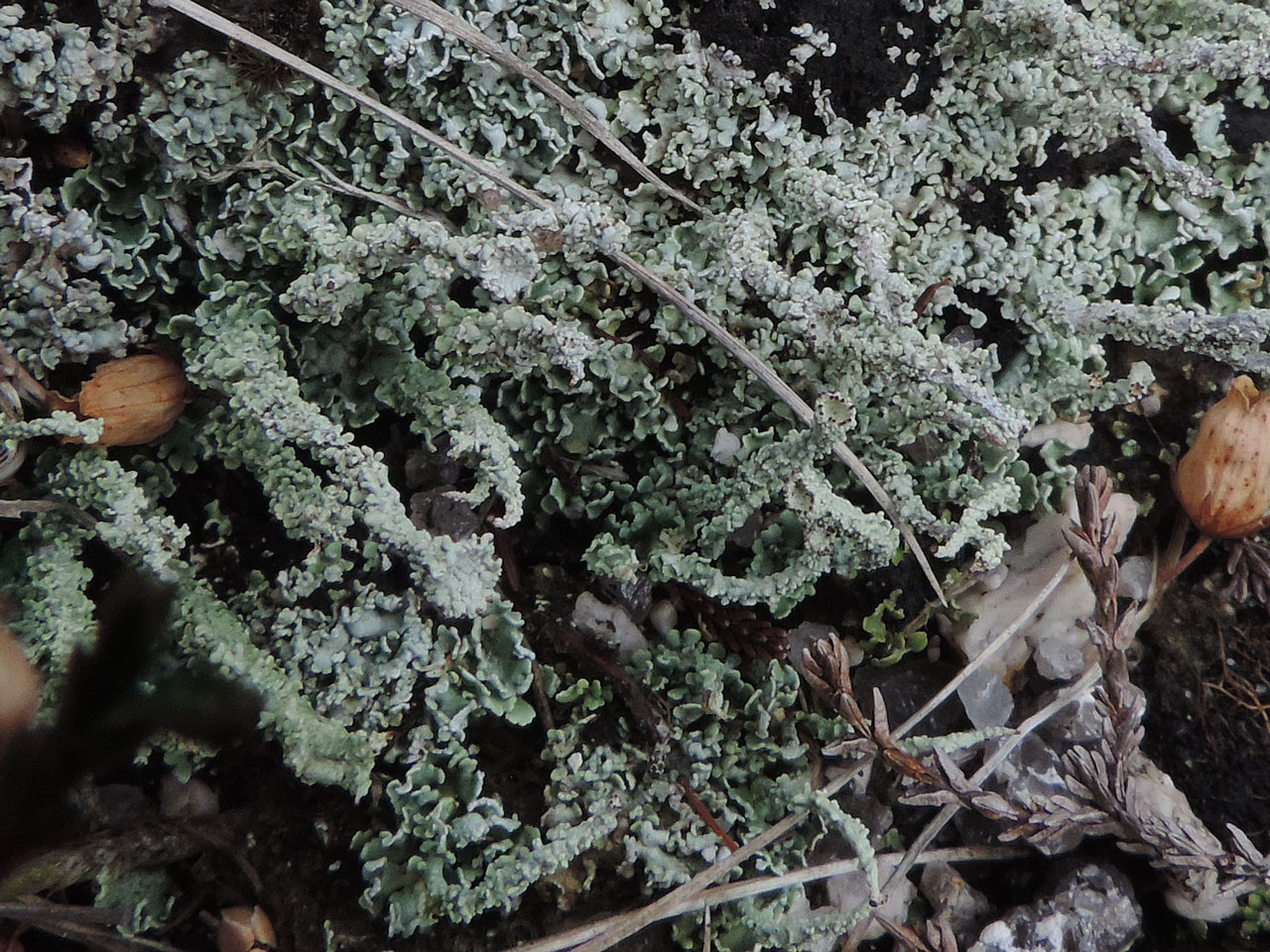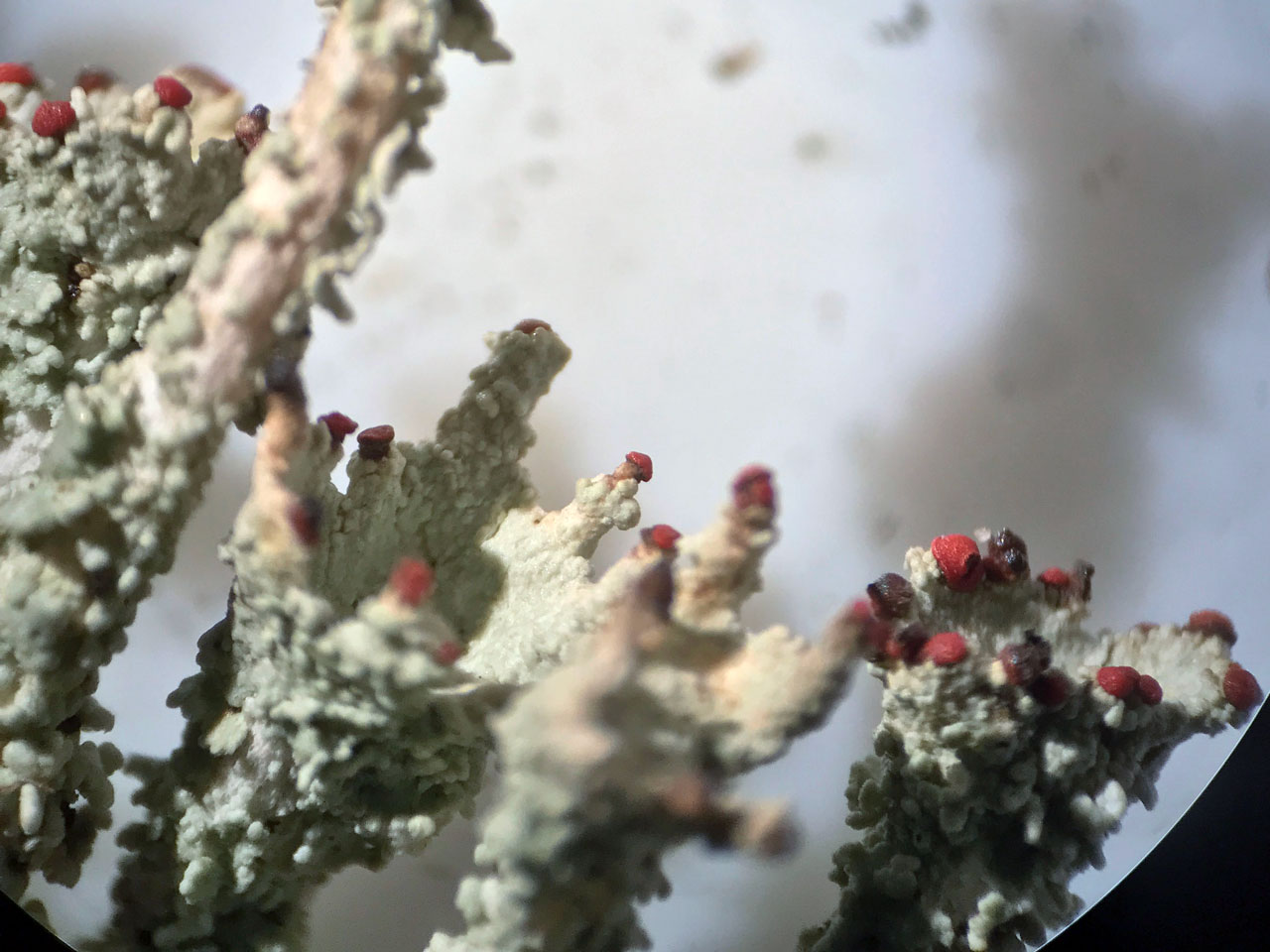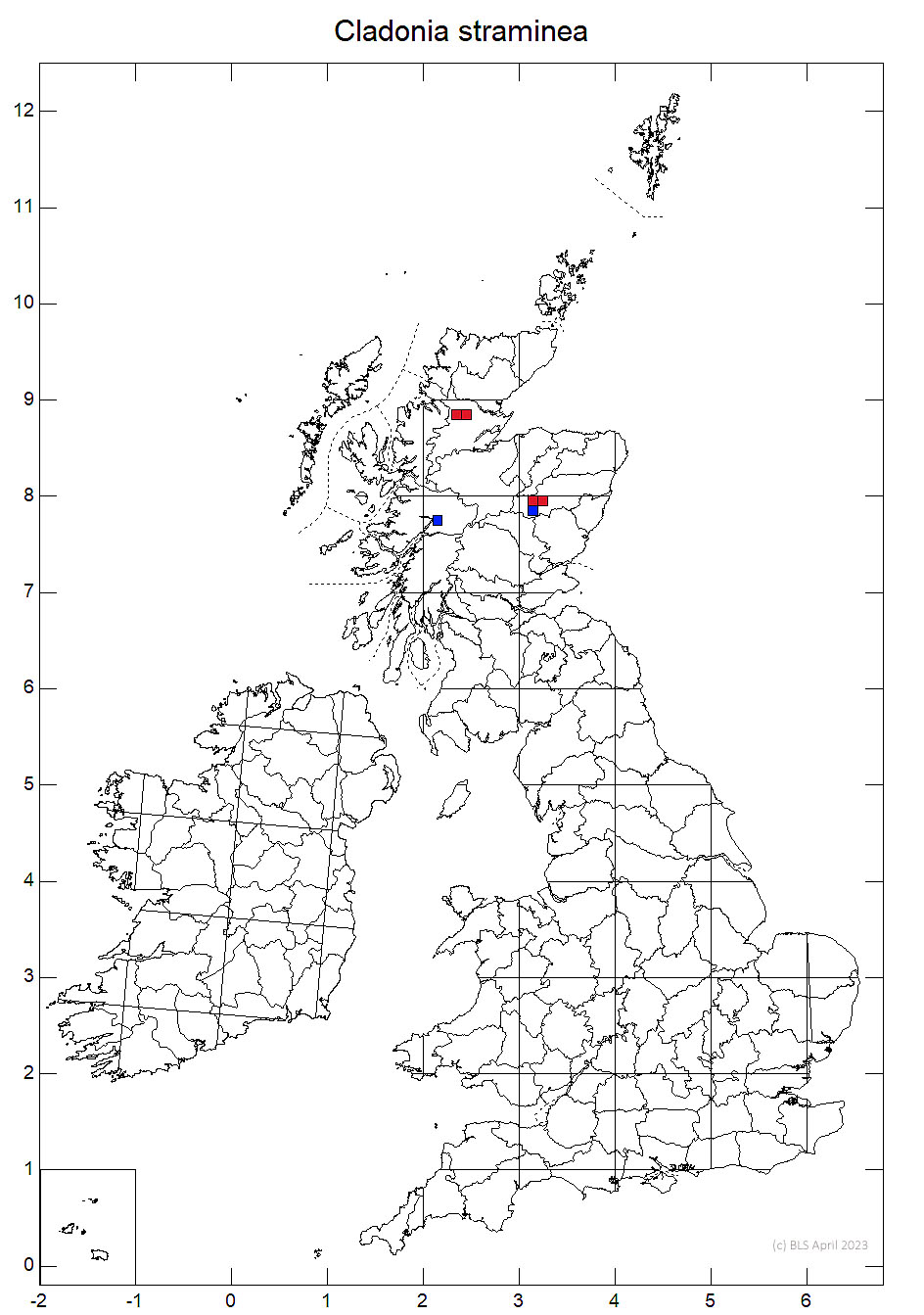A little known and probably over looked Cladonia of mountain heaths. Similar to Cladonia bellidiflora red apothecia, greenish to yellowish grey podetia, the downward- pointing narrow squamules and UV+ white fluorescence, but differs in the presence of cups.
Similar to Cladonia bellidiflora, but with well-developed scyphi. Podetia are slender, greenish to yellowish grey with narrow, sometimes dentate scyphi that may proliferate marginally, verruculose to densely squamulose apart from at the base, with downward- pointing narrow squamules, medulla of podetia ± blackened especially toward the base. Pycnidia on the margins of scyphi, containing red gel. Thallus C–, K–, Pd–, UV+ white (usnic, didymic and squamatic acids).
Most strongly resembles Cladonia bellidiflora including the UV+ white fluorescence but this for the most part lacks cups; it may develop small cups on immature podetia.The common C. diversa is confused with C. straminea; it has paler greenish yellow podetia that are not blackened below and is UV–. A chemotype with the squamatic replaced by thamnolic acid has been reported but this has not recorded from Britain yet (thallus C–, K+ yellow, Pd+ yellow, UV–).
On mossy boulders and mossy montane heaths, in ± sheltered situations, also drier peat on blanket bogs; very rare, but probably under-recorded at least in the Highlands.

W. England (Shropshire), N.E. & N. Scotland (Cairngorm region, Alladale), Ireland (Mourne Mountains, Co. Down).
Britain: Data Deficient
Scotland: Priority Taxon for Biodiversity in Scotland
Pino-Bodas, R., Sanderson, N., Cannon, P., Aptroot, A., Coppins, B., Orange, A. & Simkin, J. (2021). Lecanorales: Cladoniaceae, including the genera Cladonia, Pilophorus and Pycnothelia. Revisions of British and Irish Lichens 19: 1-45. Link
Text by Neil A Sanderson, based on Pino-Bodas et al (2021)
